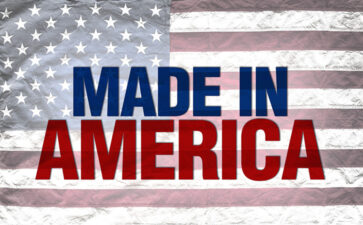A Look Ahead at the Construction and Rental Equipment Markets in 2024
As Carlisle TyrFil Flatproofing advances into the New Year with an array of premium and high-performance foam fill tire technology offerings to support the construction and rental equipment industries, we’d like to take a more thorough look at the overall state of the industry and outlook ahead for 2024.
While several factors contribute to the general health of the category, a few key trends are standing out. First off, while the market is not expected to “go gangbusters” (to coin the terminology of industry pundits) or be overly buoyant in the immediate months to come, it is also expected to remain stable throughout the New Year. According to the 2024 Annual Outlook Forecast Conference from Dodge Construction Network and The Construction Economy Outlook (as reported in Glass Magazine), overall construction starts are expected to rise 7%, building on a 1% increase in 2023. Many experts are also optimistic that spending may spike more in the months ahead, especially after the first three to six months of the year. As also reported in Glass Magazine, “many industry experts remain cautiously optimistic about the year ahead, predicting a stronger and more consistent construction market.”
Forecasts for the rental equipment space to some degree mirror some of the predictions for the construction sector and related spaces such as manufacturing. According to the 2024 forecast report from Frenter, “The Equipment Rental Industry has been historically resilient. While 2024 will see challenges, past downturns have resulted in growth for those who navigate them well.”
Paramount challenges affecting both the construction market and, subsequently, the rental equipment market include the following:
- Continued high interest rates that—while mortgage rates will likely top out this year—remain a key factor in suppressing strong market demand for new housing growth.
- A struggling labor market that still faces a deficit in qualified candidates.
- An unpredictable global geopolitical situation, which can wreck potential havoc with overall market health, even domestically (this is, in part, due to the global supply chain remaining uncertain, despite its greater stability in recent months).
Opportunities, on the flip side, include the following:
- When construction starts are more cautious, project managers rely more heavily on rental equipment, which is a positive for the rental side of the market.
- Many experts also remain confident that those construction and rental equipment operators who remain savvy and strategic when it comes to assessing and making budget and logistical plans—especially when it comes to navigating the supply chain and planning ahead for parts and materials that can be impacted by delays—can still excel in their agenda and profitability.
- A host of additional new trends including continued attention to better project integration and the role of AI-generated building planning and management offer construction operators the opportunity to flex their strategic acumen and innovative instincts—by engaging in informed planning in ways that will offer economic advantage and strong profitability.
- Technology advancements may also likely spur new building innovation development.
- The Dodge report also “predicts that 2024-2025 might be the best years for growth, thanks to delayed appropriation bills finally being passed.” (This can lead to infrastructure improvements in areas such as sewage and waste disposal system improvements.) (Source: As reported in Glass Magazine)
Industry experts also agree that environmental imperatives will play a major role in the construction market in the coming year. According to Deloitte’s 2024 Engineering and Construction Market Outlook, “sustainability continues to be a business imperative for the construction industry.” Of course, this requires greater attention to environmental compliance (as reiterated by the Deloitte report, which noted that construction companies “face a multi-dimensional challenge on this front as they adapt to evolving market trends and environmental regulations and meet customer demands for greener buildings, while also preventing construction costs from accelerating too rapidly.”). However, at the same time, a heightened attention to sustainable building also potentially opens new growth opportunities within the category, which is a strong positive stimulant for both the construction and rental equipment sectors.
How does this all translate to Carlisle TyrFil’s role as the industry’s leading manufacturer and distributor of foam fill tire technology? TyrFil™ offers ultimate tire flatproofing for heavy construction vehicles and earthmoving equipment (such as bulldozers, skid steers, excavators, telehandlers, forklifts and more). The technology virtually eliminates unwanted and dangerous tire punctures and deflations on the job. In contrast to pneumatic tires, foam-filled tires can safely operate over sharp rocks, glass, nails, and rebar on a construction site without incident. This saves operators time and money—benefitting budget-strapped construction project managers who are still battling the fallout from inflation and higher interest rates.
Given the current industry focus on greater environmental consciousness in the construction industry, the eco-friendlier tire fill alternative also offers great appeal for construction and building corporations (and federal and state government entities) looking to remain compliant with carbon reduction mandates.
Additionally, by opting for tire fill technology, projects managers are adopting exactly the type of strategic, cost-effective tactics that experts indicate will help builders to be successful during this transitional period within the industry. Because tire fill offers a lower impact ride that’s more akin to air-filled pneumatic tires, there is less muscular-skeletal fatigue on operators who spend multiple hours behind the wheel of heavy construction vehicles. In contrast, traditional solid aperture tires offer a bumpy, jarring ride from excessive G-force vibration that may cause injury (and possible related conditions from a physical phenomenon called “Whole Body Vibration”) and impact worker availability. During a period when the entire industry is facing labor availability challenges, the ability for construction site and rental equipment managers to better protect their vital workforce and lower the risk of vehicular-caused injury is paramount to good corporate responsibility, as well as proper budget management.
For more information about how Carlisle TyrFil can help you to keep your essential transportation equipment safe on the construction job site, learn more at https://carlisletyrfil.com/about-us/.


